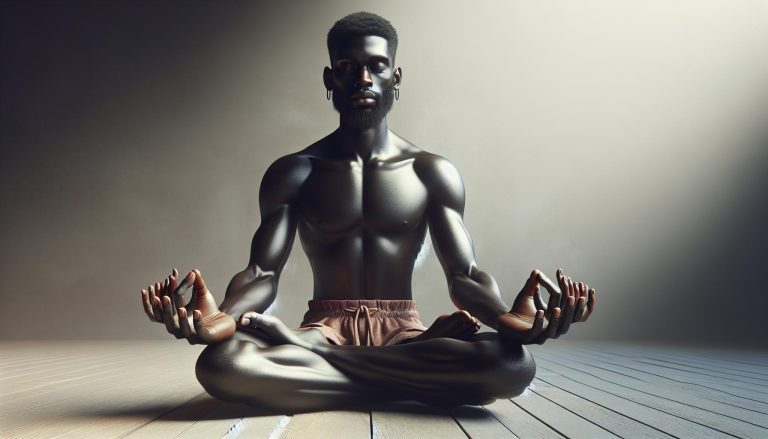Ease Anxiety with These 3 Buddhist Chants
Feeling overwhelmed by the hustle and bustle of life? You’re not alone. Anxiety can creep up on anyone, but there’s a serene solution that’s been around for centuries: Buddhist chanting. This ancient practice isn’t just for monks in monasteries; it’s a tool you can use to find your calm.
Buddhist chants are more than just soothing sounds. They’re a form of meditation that can transport you to a state of peace and tranquility. Imagine the power of your voice, combined with timeless mantras, melting away your stress. Ready to learn how? Let’s dive into the world of Buddhist chanting for anxiety relief.
What is Buddhist chanting?
Ever wondered how ancient traditions can make a modern impact on your well-being? Buddhist chanting stands out as a profound practice that has been calming minds for centuries. It’s a vocal exercise that involves reciting specific words or phrases repeatedly. But don’t mistake it for mere repetition; it’s a method steeped in intention and focus.
As you engage in Buddhist chanting, you’re not just saying words; you’re tapping into a rhythm that predates digital distractions and tight schedules. These chants often incorporate the ancient language of Pali or Sanskrit, although some practices may use localized languages. The sounds themselves are believed to have vibrational qualities that promote inner harmony and peace.
But how does it work exactly? Picture yourself immersed in the steady, melodic tones of a chant. This isn’t passive listening—it’s active participation. Your breathing aligns with the rhythm, and as you continue, a unique form of meditation unfolds. Your mind clears, stress lifts, and a state of mindfulness settles in. The repetition serves as an anchor, pulling you away from anxiety’s choppy waters into a calmer current.
The Science Behind the Serenity
There’s hard evidence backing the soothing power of Buddhist chant. Studies have shown that engaging in this practice can lead to significant decreases in anxiety levels. It does so by impacting the brain’s stress response, lowering blood pressure, and even altering brain wave patterns.
With consistent practice, you’re not just finding a temporary haven from stress; you’re retraining your brain to handle stressors better. This transformation has tangible benefits, with many reporting enhanced focus, better emotional resilience, and a more profound sense of connection with themselves and the world around them.
Digging into the specifics, consider how the chant “Om Mani Padme Hum,” one of the most famous mantras, is not just a set of sounds. Each syllable is designed to transform an aspect of your self-limiting beliefs and foster a compassionate and enlightened mindset.
Embracing Buddhist chanting isn’t about adopting a new belief system—it’s about discovering an effective tool for anxiety relief that’s rooted in tradition yet finds its relevance in every breath you take today.
The history and significance of Buddhist chanting

If you’ve ever been curious about the roots of Buddhist chanting, you’re in for a treat. What you’re diving into is a practice with a lineage as ancient as the Buddha himself, over 2,600 years ago. It started as an oral tradition to preserve the teachings of the Buddha before written scriptures were common. Monks would chant as a way to share these teachings and ensure they were passed down through generations.
Buddhist chanting is more than an echo of the past; it’s alive in the here and now, vital to both monastic and lay practitioners. You’ll find it woven into the fabric of various traditions, from Theravada to Mahayana to Vajrayana sects. Each tradition has its own unique chants but the intent of fostering concentration and mindfulness remains consistent.
Consider the profound impact of these chants. They’re often regarded as sound embodiments of the divine, believed to possess the power to purify the mind and transform negative thoughts. The purpose is practical as much as it is spiritual. As you practice, you’re engaging in an active form of meditation. A well-known chant like “Om Mani Padme Hum” is a sonic tool, aiding practitioners to break free from mental constraints and develop a sound, peaceful mind.
Chants are also seen as a means of connecting with the divine, seeking blessings, and invoking compassion and wisdom. This isn’t just about seeking personal peace; the resonance of the chant extends a wish for well-being to all beings. When you chant, you’re part of a collective rhythm that spans continents and connects hearts.
In the broader context of anxiety relief, the significance of these sounds becomes crystal clear. They’re not just words or notes, they offer a doorway into tranquility, a rhythmic anchor in life’s stormy seas. People across the globe turn to Buddhist chanting to find a center, to steady their minds, to tap into a timeless practice that has aided countless souls in the search for serenity and balance.
How does Buddhist chanting relieve anxiety?

You might wonder how exactly those serene chants you’ve heard in serene temples help keep anxiety at bay. Remarkably, Buddhist chanting operates on both a psychological and physiological level to alleviate stress and unease.
Repetition and Rhythm: As you chant, there’s a natural rhythm that emerges. This repetitive action soothes your nervous system, much like the calming effect of a lullaby. Think of it as a mental massage for your overworked mind.
Mindfulness and Focus: While you’re chanting, you’re also practicing mindfulness. This isn’t just fancy talk—being mindful pulls you away from your endless worrying and anchors you in the present. As your focus sharpens, those stress-inducing thoughts start to dissipate.
Vibrations and Sound Healing: Ever felt how a deep breath can help you relax? Chanting can take that up a notch. The vibrations resonate through your body, working to harmonize your internal state. It’s not magic—it’s sound healing at play.
Community Connection: Chanting is often a group activity, and this collective experience creates a sense of camaraderie. When you chant with others, you’re not alone with your anxiety. You’re part of something bigger, and this can be incredibly reassuring.
Positive Affirmations: The content of Buddhist chants often involves positive themes that promote compassion and inner peace. By repeating these powerful messages, you’re programming your mind towards positivity.
Here’s what you can take away from this:
- Embrace the rhythm and repetition of chanting as a form of mental relaxation.
- Use chanting as an opportunity to sharpen your focus and be fully present, cutting through the noise of anxiety.
- Remember, the sound and vibrations are more than just noise; they’re tools for internal harmony.
- Feel the strength of community when you chant with others, shedding the weight of solitude.
- Reinforce a positive mindset by embracing the affirming messages in the chants.
By integrating these practices into your life, you could see a notable shift in your ability to handle anxiety. Chant your way to a more peaceful mind and heart, unlocking a calmer, more centered version of yourself.
Techniques for practicing Buddhist chanting

When you’re looking to soothe your anxiety through Buddhist chanting, you’ll want to know the right techniques to get started. It might seem a bit overwhelming if you’re new to it, but don’t worry—you’ll get the hang of it, and you might find it more intuitive than you thought.
Find a Quiet Space
Start by finding a quiet spot where you won’t be interrupted. The serenity of your environment can greatly influence your chanting experience.
Establish a Comfortable Posture
Settle into a comfortable position. You can sit cross-legged on the floor or on a cushion, but ensure your back is straight. This posture aligns your body and helps you stay focused.
Choose Your Chant
Next, choose a mantra or chant that resonates with you. “Om Mani Padme Hum” is a classic one, known for its powerful qualities in invoking compassion.
Breathing Technique
Pay attention to your breathing. Start with a few deep breaths to settle your mind. As you begin to chant, let your breath guide the rhythm.
Repetition is Key
Repeat your chosen chant. The repetition is the heart of the practice, helping you dive deeper into a meditative state where anxiety has less grip.
Incorporate Mala Beads
If you like, use mala beads to keep track of your repetitions. This tactile element can help you stay present and focused.
Duration of Practice
Decide on the duration of your practice. You don’t have to chant for hours; even a few minutes can be beneficial. Consistency matters more than the length of each session.
Remember to practice regularly. The more you incorporate chanting into your daily routine, the more you’ll notice its calming effects on your mind. The key is to keep at it even on days when you’re not feeling up to it. Just like physical exercise conditions your body, regular mental exercises like chanting condition your mind, helping you combat anxiety over time.
Popular mantras for anxiety relief

When you’re looking to calm your mind and ease your anxiety, chanting specific Buddhist mantras can be incredibly powerful. These mantras are designed not only to promote relaxation but to also enhance your spiritual connection. Here are some you might find helpful in your journey to conquer anxiety:
Om Mani Padme Hum
Often considered the most famous Tibetan Buddhist mantra, “Om Mani Padme Hum” is believed to invoke the powerful benevolent attention and blessings of Chenrezig, the embodiment of compassion. Chanting this mantra opens your heart to the flow of positive energy and compassion, which can be instrumental in reducing stress.
Gate Gate Paragate Parasamgate Bodhi Soha
This mantra, often referred to as the Heart Sutra, is a profound chant that translates to “Gone, gone, gone beyond, gone utterly beyond, Enlightenment hail!” It signifies the complete purification of the mental, emotional, and spiritual obstacles that cause us stress. When chanted, it can be a call to release those barriers and embrace peace.
Tayata Om Bekanze Bekanze Maha Bekanze Radza Samudgate Soha
This mantra is associated with healing. The chant invokes the healing energy of the universe to aid in the alleviation of physical, mental, or emotional pain, thus reducing anxiety. It’s a way to connect with the healing powers that are said to be monumental in Buddhist practice.
These mantras are not just phrases to recite; they’re tools that can shape your mental landscape. By choosing a mantra that resonates with you, the repetitive nature of chanting can work to displace the cycle of anxious thoughts and replace them with a renewed sense of peace.
As you integrate these mantras into your practice, remember to:
- Focus on the pronunciation
- Keep your breathing steady
- Channel your intent with each repetition
With every chant, you’re taking a step towards a calmer mind. Let the rhythmic flow of the words carry you deeper into a state of serenity where anxiety has no stronghold. Keep the mantra flowing, let the vibrations work their magic, and watch as the chaos within quiets down with each cycle of chant.
Conclusion
Embracing Buddhist chanting as part of your routine can significantly alleviate anxiety and foster inner tranquility. Remember, the power lies in the repetition and the mindfulness you bring to each session. Whether you’re drawn to the compassionate vibrations of “Om Mani Padme Hum,” the profound journeying of “Gate Gate Paragate Parasamgate Bodhi Soha,” or the healing energy of “Tayata Om Bekanze Bekanze Maha Bekanze Radza Samudgate Soha,” your chosen mantra can serve as a steadfast companion on your path to peace. Let the ancient wisdom of these sounds guide you away from the noise of anxiety and towards a serene state of being. With each chant, you’re not just reciting words – you’re transforming your mind and soothing your soul.







